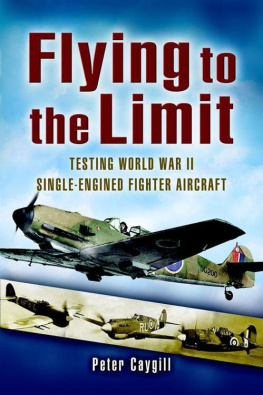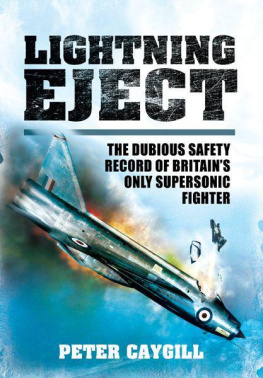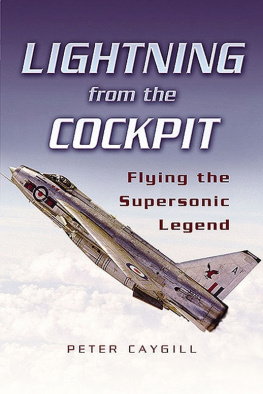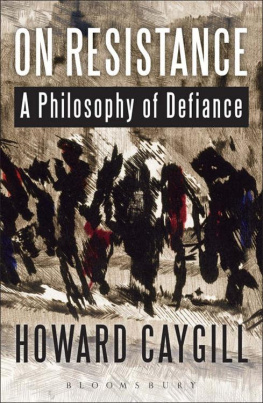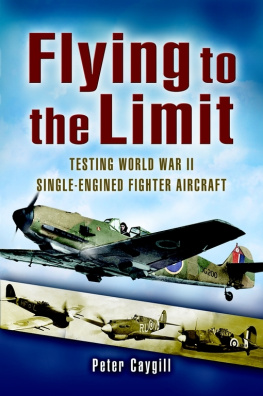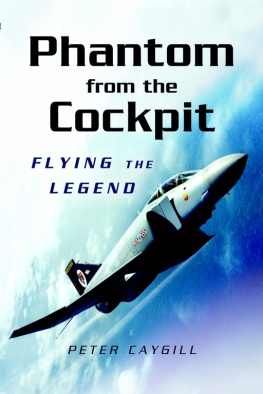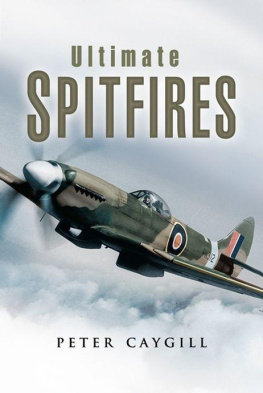Flying the Buccaneer
Britain's Cold War Warrior
Peter Caygill
First published in Great Britain in 2008 by
PEN & SWORD AVIATION
an imprint of
Pen & Sword Books Limited
47 Church Street
Barnsley
S. Yorkshire
S70 2AS
Copyright Peter Caygill, 2008
except where credited Tom Eeles, 2008
9781783460656
The right of Peter Caygill to be identified as Author of this Work has been asserted by him in accordance with the Copyright, Designs and Patents Act 1988.
A CIP catalogue record for this book
is available from the British Library.
All rights reserved. No part of this book may be reproduced or transmitted in any form or by any means, electronic or mechanical including photocopying, recording or by any information storage and retrieval system, without permission from the Publisher in writing.
Typeset in Times New Roman
Pen & Sword Books Limited
Printed and bound in England
by Biddles Ltd
Pen & Sword Books Ltd incorporates the imprints of
Pen & Sword Aviation, Pen & Sword Maritime,
Pen & Sword Military,Wharncliffe Local History, Pen & Sword Select,
Pen & Sword Military Classics and Leo Cooper
Remember When, Seaforth Publishing and Frontline Publishing.
For a complete list of Pen & Sword titles please contact:
PEN & SWORD BOOKS LIMITED
47 Church Street, Barnsley, South Yorkshire, S70 2AS, England.
E-mail: enquiries@pen-and-sword.co.uk
Website: www.pen-and-sword.co.uk
ACKNOWLEDGEMENTS
M uch of the information contained in this book has come from official RAF sources held at the National Archives at Kew and I would like to thank the staff for their assistance during the course of my research.
A book of this nature would not have been possible without the personal input of people who were involved with the Buccaneer. In particular I would like to thank Don Headley who, after flying the Vampire, Venom and Javelin with the RAF, became a test pilot with Hawker Siddeley (later BAe) at Holme-on-Spalding Moor and eventually accumulated over 1,000 hours on the Buccaneer. He was also responsible for the Phantom and spent seven years at BAe as Chief Test Pilot of its Brough division. Dons knowledge of testing the Buccaneer is second to none and his recollections of flying it to the extremes of its performance envelope make for fascinating reading.
I am also deeply indebted to Group Captain Tom Eeles who has contributed his experiences during tours flying the Buccaneer with the Fleet Air Arm and the RAF. Having flown Canberras in RAF Germany he was given the opportunity of an exchange posting with the FAA during which he flew with 801 Squadron on board HMS Victorious . He then went on to be a flying instructor and as a QFI he taught on 736 Squadron, the Royal Navy Buccaneer conversion unit, before rejoining the RAF and completing four tours on Buccaneers, one with 12 Squadron and three with 237 OCU, the last as its commanding officer. By the time that he had to say goodbye to the Buccaneer Tom had nearly 2,200 hours on type in his logbook. Group Captain Tom Eeles autobiography is published by Pen and Sword books entitled A Passion for Flying.
I would also like to thank Captain Alan J. Leahy CBE DSC and Group Captain Mike Shaw CBE. Alan Leahy was one of the first Navy pilots to fly the Buccaneer S.1 when he commanded 700Z Flight, the Intensive Flying Trials Unit at Lossiemouth. This unit was tasked with evaluating the Buccaneer to see exactly what it could do so that it could be used to its full potential. Mike Shaw had a brief association with the Buccaneer in the early 1980s when he was Station Commander at RAF Honington, home of 237 OCU. This was a difficult period for the Buccaneer as the aircraft was grounded for a time following a mid-air break up that had been caused by metal fatigue. Mike describes what it was like at this time and how the Buccaneer bounced back to regain its position as an indispensable element of the RAFs offensive power. Although he has many more hours on the Lightning and Phantom, the Buccaneer still managed to give him one of his worst moments in the air, an event that ended happily for both aircraft and crew and is recounted in the book.
Finally I would like to thank Philip Jarrett for delving into his photographic archive once again to provide a range of illustrations of the Buccaneer throughout its long and distinguished history.
INTRODUCTION
I n the period immediately after the end of the Second World War the British aircraft industry managed to produce some outstanding designs, despite the obfuscation and confused thinking that often emanated from their political overlords. One such was the Blackburn B.103 which resulted from a far-sighted Admiralty requirement for a transonic strike aircraft capable of sustained flying at low level. Initially referred to as the NA.39, it was later given the name Buccaneer and was to become, arguably, the finest attack aircraft of its day.
Although its qualities were apparent at a very early stage in the flight test programme, it was not appreciated by all. The 1950s saw a period of rapid improvement in terms of performance and the capability of military aircraft, with the World Absolute Speed Record being raised on a regular basis. There was a fascination with speed and supersonics in particular, a mood that was prevalent not only in the general public, but in a number of Air Staffs throughout the world, including the Royal Air Force. This situation was compounded by the emergence of advanced designs such as the swing wing layout, as championed by Sir Barnes Wallis, which could be used to vary the angle of wing sweep in flight. This fixation with supersonics and futuristic-looking designs was to cost the RAF dearly. Had the service not been so obsessed it might have avoided the costly abandonment of the TSR.2 project and the cancellation of the follow-on order for the General Dynamics F-111 variable-sweep, strike/attack aircraft.
While the RAF was heading down the dead end that was TSR.2, the Navy was getting to grips with the Buccaneer which soon showed that it could fly at just below the speed of sound and carry a greater load over a longer distance than any other aircraft. Although the Buccaneer S.1 with its de Havilland Gyron Junior engines was marginal on power should an engine failure occur at the wrong time, there was no such problem with the S.2 which had Rolls-Royce Speys that offered approximately 50 per cent more power. The Buccaneer was easily capable of yet more development but even after the demise of TSR.2 the Royal Air Force showed no real interest until eventually it became the only alternative. Even so there was a certain amount of resentment at having to fly a Navy machine.
Once in RAF service the Buccaneer soon silenced its critics and it quickly found an enthusiastic following among the crews that had the privilege of flying it. It was in its element at low level where its ability to fly at speeds of up to 580 knots and easily to cope with turbulence became legendary. Even by the time it was retired in 1994, by which time it had been in service for over thirty years, it had still not been bettered and the Buccaneer could easily have continued into the 21st Century had there been a need for it to do so.
This book looks at the Buccaneer from the point of view of the crews that were tasked with flying it. Performance and handling characteristics, together with the results of pre-service trials on land and at sea, are interspersed with first-hand accounts. Also included are the tactics that were devised for the overland penetration and maritime strike missions, plus some of the incidents that befell Buccaneer crews when things did not go according to plan.



